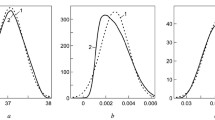Abstract
The bias of an analytical procedure is calculated in the assessment of trueness. If this experimental bias is not significant, we assume that the procedure is unbiased and, consequently, the results obtained with this procedure are not corrected for this bias. However, when assessing trueness there is always a probability of incorrectly concluding that the experimental bias is not significant. Therefore, non-significant experimental bias should be included as a component of uncertainty. In this paper, we have studied if it is always necessary to include this term and which is the best approach to include this bias in the uncertainty budget. To answer these questions, we have used the Monte-Carlo method to simulate the assessment of trueness of biased procedures and the future results these procedures provide. The results show that non-significant experimental bias should be included as a component of uncertainty when the uncertainty of this bias represents at least a 30% of the overall uncertainty.
Similar content being viewed by others
Author information
Authors and Affiliations
Additional information
Received: 29 May 2001 Accepted: 10 December 2001
Rights and permissions
About this article
Cite this article
Maroto, A., Boqué, R., Riu, J. et al. Should non-significant bias be included in the uncertainty budget?. Accred Qual Assur 7, 90–94 (2002). https://doi.org/10.1007/s00769-001-0434-y
Issue Date:
DOI: https://doi.org/10.1007/s00769-001-0434-y




